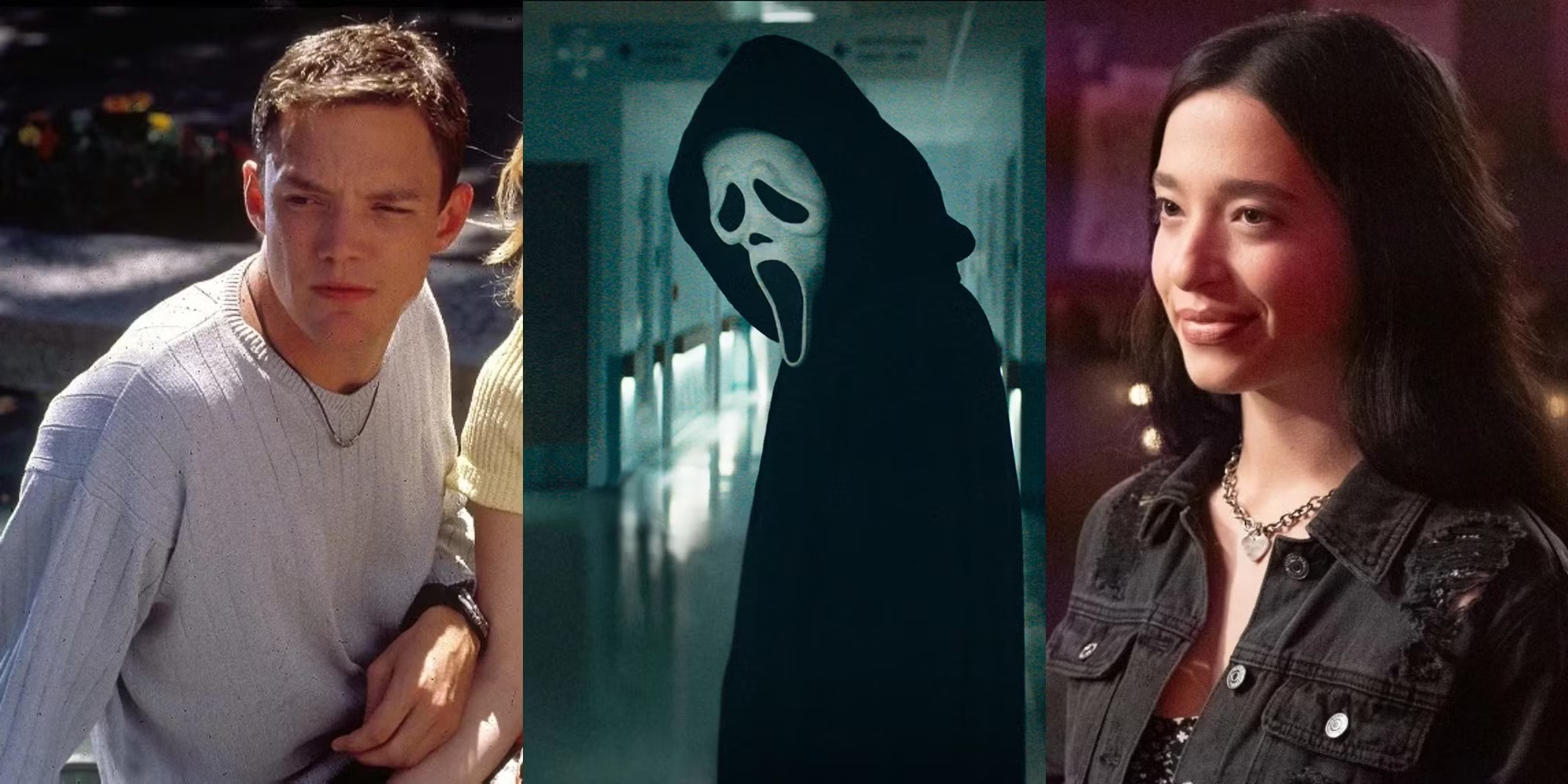Unraveling the Mystery: Who Was the Killer in Scream?
The 1996 horror film Scream not only revitalized the slasher genre but also captivated audiences with its clever twist and self-aware storytelling. Central to its intrigue is the lingering question: who was the killer in Scream? This question has sparked debates, fueled fan theories, and cemented the film’s legacy as one of the most innovative horror movies ever made. In this comprehensive article, we delve into the origins of Scream, examine the characters behind the mask, and explore the cultural impact of its notorious reveal.
The Legacy of Scream: A Revolution in Horror
When Scream hit theaters in 1996, it changed the way horror films approached storytelling. Unlike its predecessors that relied solely on relentless gore and suspense, Scream combined witty dialogue with meta-commentary on the very tropes that had long defined the slasher genre. The film openly acknowledged the clichés of horror cinema while using them to build tension and misdirect audiences.
One of the reasons audiences remain captivated is due to the film’s ability to turn expectations on their head. The narrative cleverly plays with the notion of identity and deception, leaving viewers constantly guessing who was the killer in Scream. By questioning every character’s motive and suspecting even the most unassuming individuals, the film created an atmosphere of paranoia and excitement that continues to resonate with fans today.

The Killer Unmasked: Who Was the Killer in Scream?
The central mystery of Scream revolves around the identity of the killer—or rather, killers. In a shocking twist that defied audience expectations, the film revealed that there were not one, but two culprits behind the gruesome murders: Billy Loomis and Stu Macher. Their unholy alliance and contrasting personalities made their reveal both surprising and disturbingly believable.
The film meticulously builds up each character’s backstory and motivations, ultimately linking their actions to deeper personal vendettas and societal influences. This duality is what makes the question who was the killer in Scream so compelling. Rather than offering a single, easily digestible answer, the film forces viewers to confront the unsettling possibility that evil can wear many faces—even those of friends or trusted figures.
Analyzing the Characters: The Psychology Behind the Killers
To truly appreciate the genius of Scream, one must dive into the psychology of its antagonists. Billy Loomis, a seemingly charming young man, and Stu Macher, his unpredictable accomplice, represent two different manifestations of villainy. Billy’s calculated manipulation contrasts sharply with Stu’s erratic behavior, creating a dynamic that not only intensifies the narrative but also complicates the audience’s attempt to answer who was the killer in Scream.
Billy Loomis: The Mastermind
Billy Loomis is the archetypal antagonist whose calm demeanor masks a turbulent interior. His motivations are deeply entwined with personal history and betrayal, particularly relating to family relationships and past traumas. Billy’s character challenges the viewer’s assumptions—just when you believe you have deciphered his intentions, the narrative takes another unexpected turn. His involvement raises questions about trust and the hidden darkness that can lie beneath the surface of ordinary life.
Stu Macher: The Chaotic Force
In stark contrast to Billy, Stu Macher embodies chaos and impulsiveness. His erratic actions and less thought-out motives provide a foil to Billy’s cold, calculated approach. The collaboration between the two creates a dissonance that keeps the audience off-balance, continually revisiting the question who was the killer in Scream. Their partnership underlines a core theme of the film: the coexistence of order and chaos in human behavior, making it difficult to pinpoint a singular source of malevolence.
The Art of Misdirection: Crafting the Question “Who Was the Killer in Scream?”
One of the standout achievements of Scream is its masterful use of misdirection. Director Wes Craven, along with writer Kevin Williamson, employed a narrative style that kept audiences guessing at every turn. The film intentionally planted red herrings and suspicious circumstances around almost every character, ensuring that the reveal of the killers was both shocking and, in retrospect, perfectly logical.
Throughout the movie, subtle hints are dropped that encourage viewers to ponder who was the killer in Scream. Each scene is designed to build tension and to challenge the audience’s preconceptions about who they should trust. This approach not only deepened the mystery but also made the eventual reveal more impactful. The film’s structure demonstrates that in the realm of horror, the journey to the truth can be just as exhilarating as the truth itself.
Fan Theories and Cultural Impact: Deciphering Who Was the Killer in Scream
Since its release, Scream has inspired countless discussions among horror enthusiasts and film critics alike. The question who was the killer in Scream quickly evolved from a simple plot point into a cultural phenomenon. Fans eagerly dissect every frame of the movie, rewatch scenes, and debate the clues that pointed to the dual identity of the killers.
The Birth of Endless Debates
Online forums, social media groups, and fan sites have all played a role in keeping the conversation about Scream alive. Even decades after its debut, new generations of viewers continue to scrutinize the film, trying to uncover hidden meanings and unspoken hints. The multiplicity of interpretations surrounding who was the killer in Scream is a testament to the film’s enduring complexity and its impact on pop culture.
Influence on Modern Horror Films
The legacy of Scream extends far beyond its own narrative. Its innovative approach to storytelling has influenced a host of modern horror films, many of which borrow elements of meta-commentary and self-referential humor. This ripple effect has helped redefine the genre, encouraging filmmakers to experiment with narrative structures and character development. In many ways, the legacy of Scream is inseparable from the ongoing conversation about who was the killer in Scream, a question that continues to inspire both filmmakers and audiences to push the boundaries of horror storytelling.
Revisiting the Mystery: Modern Perspectives on “Who Was the Killer in Scream?”
In the years following its release, Scream has not only remained a staple of horror culture but has also been reexamined in various contexts. Critics have explored the film’s commentary on media sensationalism, the portrayal of violence, and its critique of the “rules” governing horror narratives. Each reexamination adds another layer to the central mystery, reinforcing the intrigue surrounding who was the killer in Scream.
The Role of Nostalgia and Reinterpretation
For many, revisiting Scream is an exercise in nostalgia. However, the film’s complexity means that each viewing can reveal new insights. Modern audiences, armed with the knowledge of past films and an awareness of contemporary societal issues, are able to reinterpret the narrative in fresh ways. This constant reinvention ensures that the question who was the killer in Scream remains relevant, sparking debates that blend both nostalgia and critical analysis.
Academic and Critical Analyses
Scholars and film critics have also taken an interest in Scream, examining its structure, themes, and the implications of its twist. The film’s layered narrative and subversion of traditional horror elements have made it a subject of academic study. Papers and lectures frequently reference the duality of the killers and explore the psychological depth of characters like Billy Loomis and Stu Macher. In this academic context, the inquiry into who was the killer in Scream serves as a gateway to broader discussions about identity, media influence, and the evolution of horror cinema.

The Enduring Enigma: Reflections on the Question “Who Was the Killer in Scream?”
The brilliance of Scream lies in its ability to transform a simple slasher film into a rich tapestry of narrative intrigue and cultural commentary. The question who was the killer in Scream encapsulates not just the plot twist of the film, but also its broader challenge to the conventions of the horror genre. By blurring the lines between good and evil, reality and fiction, Scream invites viewers to question their own perceptions of fear and morality.
This enduring enigma has ensured that Scream remains a topic of discussion nearly three decades after its release. It has inspired sequels, imitations, and a legion of fans who continue to debate the film’s many layers. The mystery at the heart of Scream is not just about the identity of the killers; it’s about the nature of storytelling itself. Every time audiences ask who was the killer in Scream, they are reminded of the film’s innovative spirit and its lasting impact on both the horror genre and popular culture.
Conclusion
In exploring the multifaceted mystery of Scream, we find that the question who was the killer in Scream is as much about the film’s narrative complexity as it is about its cultural legacy. From its groundbreaking approach to horror and its intricate character development to the ongoing debates it has sparked among fans and critics alike, Scream continues to captivate and challenge audiences around the world.
The dual revelation of Billy Loomis and Stu Macher as the killers not only provided one of the most memorable twists in horror history but also opened the door for deeper discussions about identity, trust, and the art of misdirection in storytelling. The film’s legacy endures because it dared to ask difficult questions and refused to offer easy answers—a philosophy that remains at the core of why audiences still wonder, who was the killer in Scream.
As we reflect on the lasting impact of Scream, it becomes clear that its influence extends far beyond the confines of a single film. It has redefined the way we approach horror, challenged our expectations, and reminded us that sometimes, the most frightening mysteries are the ones that force us to question everything we think we know. Whether you’re a longtime fan revisiting the classic or a newcomer drawn in by its timeless appeal, the enigma of Scream invites us all to delve deeper into the art of suspense and to appreciate the craft of storytelling that continues to captivate generations.
In the end, the mystery of Scream is not solely about pinpointing the exact moment when the killers were unmasked, but about embracing the uncertainty and complexity that make horror—and storytelling as a whole—so endlessly fascinating. So, the next time you find yourself pondering who was the killer in Scream, remember that the true magic of the film lies not in the answer, but in the thrilling journey of discovery it offers.



